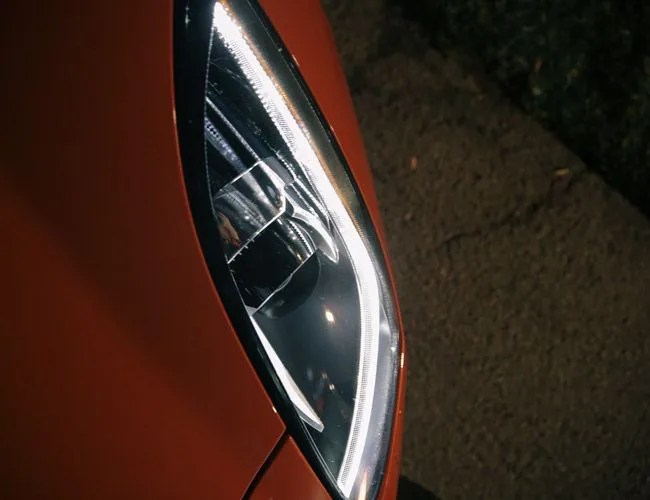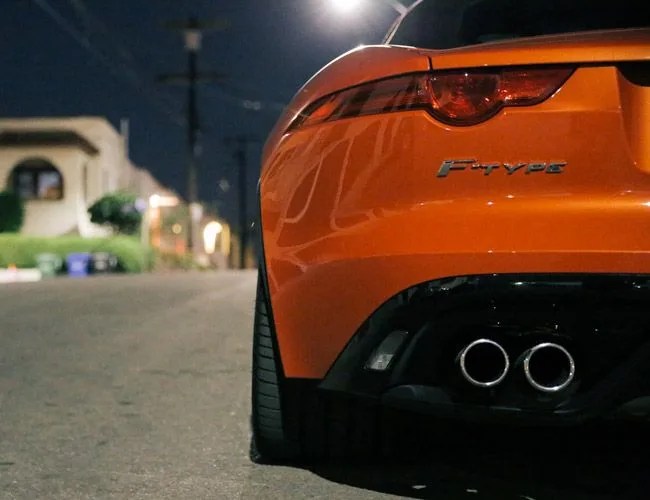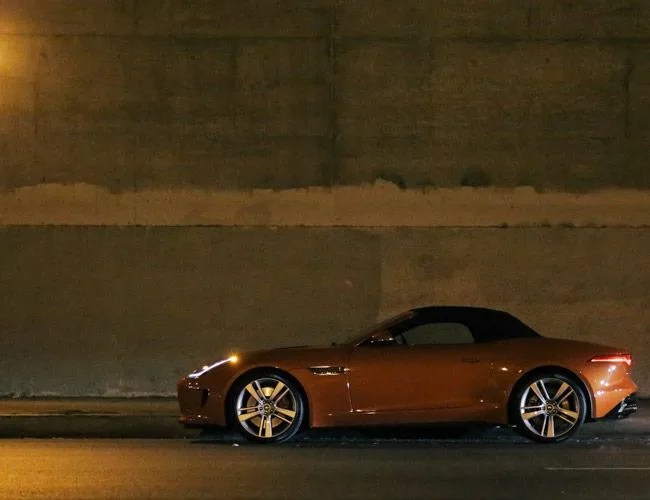When Jaguar introduced their iconic E-Type in the early 1960s it demanded the attention of the automotive world like nothing else before it ever had. New for 2014, the Jaguar F-Type ($69,000 base) looks to get your attention in a big way, too. First coming to life as the C-X16 concept, the production version debuted at the historic Goodwood Festival of Speed in 2012. Thanks to thrilling driving dynamics and a competitive price point, it could be the most exciting offering from the Brits (under Indian ownership) since the tea trade routes.
More Two-Seater Goodness: Porsche Cayman | Audi R8 V10 | Lamborghini Aventador
The two-seater F-Type comes as a coupe or roadster with your choice of supercharged V6 or V8. Our “Firesand Metallic” V8 S model’s 5.0 liter 495 hp V8 flung our aluminum chariot to 60 mph in 4.2 seconds and let loose a screeching rumble from the quad exhaust that puts it in the running for the best sounding car ever. That sound went from throaty and rugged to downright intoxicating after pushing the “active sport exhaust” button; even at just 40 mph it had everyone on the sidewalks searching for its source. Purists will love the exhaust, no question, but might be frustrated to learn there is no manual option, yet. Jaguar offers the consolation prize of paddles on the wheel, however — and truth be told, the clutch and connectedness a manual transmission usually brings wasn’t missed thanks to the rapid-fire eight-speed “QuickShift” transmission.
Cornering is tight and flat due to the stiff frame, small proportions and massively wide rear wheels that put a death grip on the pavement. However, like most high-powered rear-wheel-drive sports cars, it was easier to break loose than a pair of paper handcuffs. To reduce these moments, Jaguar added an electronic active differential and sport suspension with active dynamics to adjust to the road conditions. Still, it always felt like the car was just on the edge of driving sideways, and without a proper track (we had Mulholland and some side canyons) this wasn’t something we actively sought out. As tight as the steering is, we would’ve like more feedback through the steering wheel.
4 photos
The interior finally seems as if it was designed by someone under 80 years old, with its clean lines that look, unsurprisingly, similar to the Evoque’s and quality materials in the areas normally scrimped on for money-saving reasons (the paddle shifters and the climate control knobs, for example). This brilliant balance of necessary buttons and bespoke styling goes along way toward making one feel comfortable spending the kind of dough ($69,000-$92,000) necessary to acquire this object of passion.
This all translates to a success for Jaguar. Built to compete directly with the Porsche 911, the F-Type raises the bar in excitement and experience with stunning design, beautiful interiors and a range of outspoken supercharged engines that make it rain power. The V8 S model we had was close to $100,000, and at that price point is highly competitive with Audi’s R8 and most of Porsche’s 911 offerings; despite Jaguar’s ups and downs in popularity and performance over the years, the F-Type signals a return back to that upper echelon of the two-seater sports car that used to be so distinctly British.




